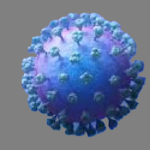Prostate Cancer: Discover the Causes, Effective Treatments, Prevention Tips, and Essential Awareness
Globally, prostate cancer is one of the most common cancer observed in males worldwide. Understanding the complexities of cancer, including its origins, available treatments, and preventive measures, is crucial because it is the second most common cause of cancer-related deaths among males. Furthermore, raising prostate cancer awareness is crucial for promoting early detection and boosting treatment efficacy.
What is Prostate Cancer?
The prostate is a little gland located between the bladder and the rectum. Prostate gland is necessary for the male reproductive system to produce seminal fluid, that helps in carrying and feeding the sperm. Prostate disease arises when cells within the prostate gland begin to multiply uncontrollably. Both benign (non-cancerous) and malignant (cancerous) tumours may result from this unchecked growth. If not treated, malignant cells can infiltrate nearby tissues and spread to other parts of the body.
Although the specific causes of prostate disease are unknown, a number of risk factors have been identified that raise a man’s likelihood of developing the disease.
Who is killed by prostate cancer?
1.Age
Prostate disease is most commonly associated with old age. More than 60% of cases are diagnosed in men over 65, and the risk rises sharply after age 50.
2.Family History
Prostate disease is significantly influenced by genetic predisposition. Men who have a family history of prostate cancer are more vulnerable, especially if they have a father or brother who has been diagnosed with the disease.
3.Race and Ethnicity
According to research, males of African heritage are more likely than Caucasian men to acquire prostate disease . Although the exact causes of this discrepancy are unknown, additional underlying biological and environmental elements might be involved.
4.Hormonal Factors
Prostate disease may be influenced by the male hormone testosterone. It has been demonstrated that elevated hormone levels aid in the development of prostate cells.
5.Diet and Obesity
The relationship between diet and prostate disease risk is still being studied. A heavy diet rich with dairy products, processed meat, and red meat may hike the risk of cancer. Another contributing factor is obesity, since some research indicates that men who are overweight and have prostate cancer may have a more aggressive version of the disease.
6.Environmental Factors
Prostate disease risk may be increased by exposure to specific chemicals and environmental pollutants, such as industrial chemicals and pesticides.

Symptoms of Prostate Cancer
Because early prostate cancer frequently shows no symptoms, routine screening and education are crucial. As the disease progresses, symptoms may include:
– Difficulty urinating or changes in urinary frequency
– Blood in urine or semen
– Painful ejaculation
Persistent pain in the back, hips, or pelvis
– Unexplained weight loss
Diagnosis
There are several methods for diagnosing prostate cancer, including:
- Digital Rectal Exam (DRE): A medical professional looks for anomalies in the prostate.
- Prostate-Specific Antigen (PSA) Test: Prostate disease or other prostate problems may be indicated by elevated PSA levels in the blood.
- Biopsy: To obtain tiny samples of prostate tissue for laboratory examination in the event that cancer is detected, a biopsy may be carried out.
- Imaging Tests: To determine the degree of cancer spread, MRI, CT, and bone scans may be performed.
Treatment Options
The course of treatment for prostate cancer is mostly determined by the patient’s choices, general health, and the disease’s stage. Several treatment modalities include:
1.Active Surveillance
Patients may choose active surveillance, which involves close monitoring of the cancer without prompt treatment, for low-risk, localised prostate disease .
2.Surgery
The gland that houses the prostate and some surrounding tissue are surgically eliminated during a radical prostatectomy. For localised malignancies, this method is frequently appropriate.
3.Radiation Therapy
This treatment destroys cancer cells with high-energy radiation. It can be used to eradicate any cancer cells that are left over after surgery or as a primary treatment.
4.Hormone Therapy
This treatment, also known as androgen deprivation therapy, aims to reduce testosterone levels, which can accelerate the development of prostate disease .
5.Chemotherapy
For cases of metastatic prostate disease or those that do not respond to hormone therapy, chemotherapy may be advised.
6.Immunotherapy and Targeted Therapy
New therapies that target particular features of cancer cells or use the body’s immune system to combat the disease are being developed.
Preventive Measures and Lifestyle Changes
A number of lifestyle modifications can lower the risk of prostate cancer, even while some risk factors, like age and genetics, cannot be changed:
1.Dietary Adjustments
Risks may be reduced by eating a heart-healthy diet high in fruits, vegetables, whole grains, and good fats (such as omega-3 fatty acids from fish). Consuming less dairy and red meat is also advised.
2.Regular Exercise
Physical activity can lower hormone levels linked to an increased risk of prostate cancer and reduce obesity.
3.Healthy Weight
The risk of prostate cancer and other cancers can be considerably decreased by maintaining a healthy weight through food and exercise.
4.Avoid Tobacco and Limit Alcohol
Numerous health problems, including an increased risk of cancer, have been connected to smoking and excessive alcohol consumption.
5.Regular Screening
It’s crucial to follow suggested screening schedules and have regular conversations with healthcare professionals about prostate cancer screening, particularly for individuals who are more susceptible.
The Importance of Awareness
Prostate cancer public awareness initiatives are crucial. They can provide information on the condition, its symptoms, dangers, and the value of routine checkups to men and their families. The American Cancer Society and the Prostate Cancer Foundation are two organisations that offer helpful resources for support and education.
Men are also advised to speak candidly with medical experts about their health, particularly if they have a family history of prostate cancer or show any symptoms. In order to improve treatment outcomes and prognosis, early detection can be achieved through increasing awareness.
Conclusion
For men worldwide, prostate cancer continues to be a major health concern. People can take control of their health and make educated decisions by being aware of the causes, symptoms, and available treatments. In addition to encouraging early detection, keeping a proactive and informed approach to prostate cancer may result in improved treatment outcomes. As science progresses, raising awareness and educating people will play fundamental roles in combating this formidable disease.
Suggestions for Readers
Amazon.com
- Get Well Soon Gifts for Men, After Surgery Cancer Gifts for Men Chemo Care Package Get Well Gift Basket for Sick Friends
- Vadaka Cancer Awareness Keychain Cancer Survivor Gift Cancer Fighter Gift Life is Tough But I am Tougher Keychain Cancer
- VNOX Men’s Inspirational Mantra Engarved Handmade Braided Leather Adjustable Cuff Bangle Bracelet
- I WEAR LIGHT BLUE FOR MY HUSBAND – Prostate cancer awareness T-Shirt
Amazon. in
- MUGSMAFIA Coffee Mug Funny I Had It I Beat It and Free Prostate Cancer
- SKY DOT I Wear Light Blue for My Dad Prostate Cancer Awareness Printed Ceramic Tea/Coffee Mug
- Planet Ayurveda Prostate Support Tablets, Ayurvedic Medicine Beneficial in Prostate
- Himalaya Himplasia Tablets – 30 Count










